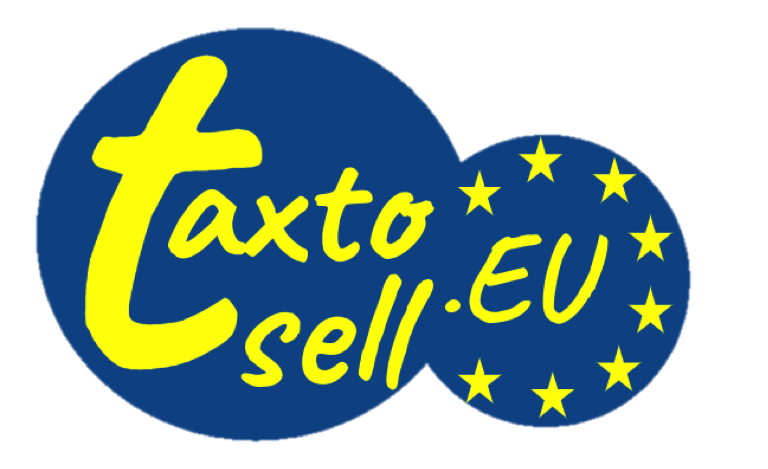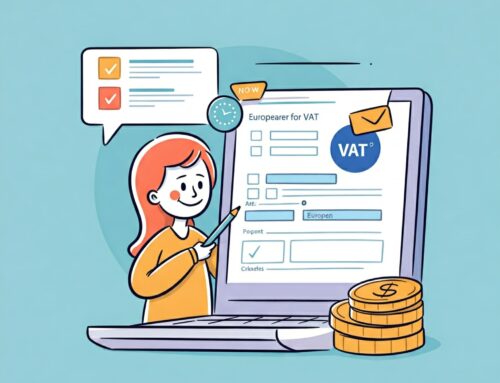This article has been written after the the substantial change in VAT regulation of July 2021.
Are you an entrepreneur and operate in several European Union countries? Do you think the VAT rules are confusing and overwhelming? Look no further! Our complete guide on VAT in EU contains everything you need to know about the different VAT regulations in the different EU countries. From an overview of VAT in the European Union to compliance with VAT rules for businesses operating in the EU, we have you covered. Discover the different VAT rates in each EU country, report on VAT exemptions and refunds, and explore rules and regulations relating to cross-border trade. With our complete guide, you will have the necessary knowledge and tools to navigate the complex VAT landscape in Europe.
Overview of Value Added Tax (VAT) in Europe
Knowing the Value Added Tax (VAT) in Europe is essential for companies operating in various countries. Different VAT rates are used throughout Europe, comprising the normal, reduced and zero rates. The most commonly applied type is the normal, which is the highest rate applied to most products and services. The reduced rate is a lower rate that applies to certain items and services. As for the zero rate, it is the one that applies to certain goods and services exempt from VAT. It is important to keep in mind that each nation has its own taxes and companies must follow the rules of each country in which they work. This article will study in depth the different types of VAT and their respective rates in European countries, so that companies can better understand the VAT system.
Understanding the general vision of Value Added Tax (VAT) in Europe is essential for companies operating in several countries. There are various types of VAT across Europe, such as the standard rate, the reduced rate and zero. The standard rate is the highest rate of VAT that applies to most goods and services, while the reduced rate is a lower rate that applies to certain goods and services. The zero rate is the type of VAT that applies to certain goods and services exempt from VAT. It is essential to keep in mind that each nation has its own rules and companies must abide by the rules of each nation in which they operate. This article will provide an exhaustive examination of the different types of VAT and their rates in the various European countries, thus enabling companies to have a clearer understanding of the VAT system.
VAT in the European Union
The European Union brings together 27 countries economically and politically, the majority in Europe. The consumption tax, VAT, is added to the cost of the products and services at each stage of manufacture and distribution. All EU countries have a VAT structure, although regulations and rates may differ. Understanding the VAT system in the EU is essential for organisations doing business within the region, as well as for those importing goods from outside the EU, such as vat imports from Latin America or Asia.
A vital feature of the VAT system in the EU is the ability to claim VAT refunds. Companies with a valid VAT number registered for VAT purposes in an EU nation can claim the VAT they have paid in another state. This is particularly useful for organisations that frequently trade across borders within the EU, as it can reduce their VAT costs and improve their cash flow. However, there are rigid rules and processes to be followed in order to apply for VAT refunds, which may differ between member states.
VAT rates in the EU can also be significantly contrasted between member states. Some nations have a normal VAT rate, which applies to most goods and services, while others have multiple types, with reduced rates and exemptions for certain products and services. The EU sets a minimum standard VAT rate of 15%, but the Member States are free to set their own rates above this point. This can make it more difficult for companies operating in several EU Member States to understand the different VAT rates and regulations.
Another notable element of VAT in the EU is the VAT rules for digital service providers. Since 2015, EU Member States are required to apply VAT to all digital services provided to customers within the EU, regardless of the supplier’s place of origin. This affects services such as multimedia streaming, software downloads and online advertising. The VAT rules for digital services can be complicated, and the companies providing these services must ensure that they comply with the relevant rules to avoid fines and penalties.
For any question ask our free online vat consultant.
VAT rates in the different European countries
As regards VAT, the European Union (EU) has its own set of rules and percentages. Many countries apply a standard rate, while others employ multiple levels depending on the type of product or service. France, for example, has four different VAT rates: 20% for ordinary goods and services, 10% for food and essential supplies, 5.5% for books and medical articles, and 2.1% for certain construction-related items. Companies operating within the EU should be aware of the different types of VAT, as they can significantly affect prices and profits.
VAT rates can change over time. Germany, for example, temporarily reduced its rate from 19% to 16% in 2021 to stimulate consumer spending during the COVID-19 pandemic, but the reduction will expire at the end of 2022. Similarly, in 2012, Spain increased its normal VAT rate from 18% to 21% in response to the country’s economic crisis. To plan ahead, companies must be aware of these changes in VAT rules.
Cross-border transactions within the EU can present another challenge, as the VAT rate is determined by the country of destination rather than the country of origin. This can be difficult for companies operating in a number of countries, as they need to keep up with different types and regulations. Fortunately, there are resources that facilitate the process and ensure the correct application of VAT.
In addition, some countries outside the EU also have VAT systems, such as Norway and Switzerland. While these countries are not part of the EU, their VAT rules can continue to affect companies operating within the union and do business with these countries. In order to comply with the regulations and to be successful, companies must know the VAT rates and regulations of each country in which they operate.
VAT for EU digital service providers
As an EU digital service provider, it is essential to know the VAT rules. Different nations have different rules and types in relation to VAT, so it is essential to find out in which countries your services are used and whether you should register for VAT purposes in those countries. Neglecting compliance with VAT rules can lead to legal consequences and penalties, so keeping up with the latest regulations and requirements applied by different countries is essential.
A crucial point in relation to VAT for digital service providers is the concept of place of supply. This refers to the place where your services are rendered inferential for VAT purposes. The rules concerning the place of supply may vary according to the type of service you offer and the location of your consumers. For example, when you provide digital services to consumers in other EU countries, you may have to register for VAT purposes in those countries and apply the local VAT rate. In order to ensure compliance with VAT rules as a digital service provider, it is crucial to obtain professional advice and be aware of the most recent changes and updates applied by countries.
VAT compliance for businesses in Europe: Ensuring compliance with the Value Added Tax (VAT) regulations is a critical factor for organisations doing business in Europe. Keeping up with amendments to the law is essential, as failure to do so can carry heavy fines and penalties. Companies must be aware of the different VAT rates in each country in which they operate to avoid charging more or less. In addition, they must ensure that they comply with cross-border VAT rules, or else they may suffer serious consequences.
VAT countries: Companies operating in several countries should be aware of the complexities of cross-border VAT, such as the need to register for VAT purposes in several nations, which depends on the nature of the company. Ignoring these requirements can lead to legal problems and economic sanctions. In order to avoid these problems, it is essential that companies understand and comply with cross-border VAT rules.
In conclusion: In short, compliance with VAT rules is essential for businesses operating in Europe. It is essential to know the VAT legislation of each country, as well as the cross-border VAT legislation, in order to avoid any legal problems or economic sanctions.
VAT exemptions and refunds in Europe
As an employer working in Europe, it is essential to know VAT exemptions and refunds. One of the most crucial exemptions is that of small businesses that do not reach the VAT registration limit. In many European countries, companies with a turnover of less than a certain amount are not required to register for VAT purposes. This can save small businesses time and money on administrative tasks and enable them to remain competitive in their markets. In addition, several goods and services may be exempt from VAT, such as medical supplies or educational material. Knowing these exemptions can help companies save money on their VAT obligations and operate with greater competition.
For companies that need to register for VAT purposes, it is essential to understand the reimbursement process. If your company incurs VAT for goods or services obtained in another European nation, you may be entitled to a refund. This is particularly relevant for companies that engage in cross-border trade or provide services to customers in other countries. However, the return process can be intricate, with different rules and regulations in each nation. Keeping a detailed record of your VAT obligations and working with a well-informed VAT advisor to make sure you follow the proper procedures to apply for returns is a normal type. Knowing VAT exemptions and refunds in Europe, companies can save money and work more effectively on the convoluted VAT landscape.
VAT and cross-border trade in Europe
Navigating VAT rules for cross-border trade in Europe can be a complex undertaking. Companies involved in this type of trade should take into account the VAT rules of both the exporting country and the importer, or risk penalties and fines. It is therefore essential to stay informed on the latest legislation.
VAT rates for goods or services subject to cross-border trade may vary, and therefore affect the cost of the transaction. It is important to be aware of these discrepancies and take them into account in price and cost calculations. In addition, companies engaged in cross-border trade can benefit from VAT exemptions or refunds in certain cases, which can help to reduce costs and optimise profitability.
The documentation and maintenance of adequate records for VAT purposes are also essential for cross-border trade in Europe. Businesses must keep accurate records of their transactions, including invoices, receipts and shipping documents. In addition, they must ensure that they use the appropriate VAT codes and present their VAT returns on time and accurately. Robust systems and processes are needed to effectively manage VAT on cross-border trade, as any non-compliance can lead to heavy penalties and fines.
Resources to further research
For those wishing to explore the depths of VAT in Europe, there are several options to choose from. The European Commission’s website is a great source of information on the rules and needs related to VAT in all EU member countries. This page provides not only in-depth descriptions of each country’s cultural VAT, but also resources and guidance for companies that expect to meet these standards.
The International VAT Association (VAT) is another valuable resource for VAT stakeholders in Europe. This professional association works to promote knowledge and understanding of this tax around the world. VAT offers a wide range of information on VAT compliance, from webinars to conferences and other educational materials. Employers wishing to extend their operations or to tax professionals who wish to expand their knowledge, VAT can help them to obtain the information and resources needed to fully understand this area of the ever-evolving European legislation.
Conclusion
In conclusion, understanding the rules on VAT in Europe is crucial for businesses operating in the EU. VAT rates vary according to countries and sectors, and it is important to comply with the rules of each place to avoid penalties and fines. There are exemptions and VAT refunds in certain cases, such as distance selling. Keeping abreast of the latest VAT regulations and seeking guidance from professionals, businesses can navigate the complex VAT landscape in Europe and operate successfully across borders. For further information on accounting, you can have a look at our comprehensive guide on EU accounting for businesses.




